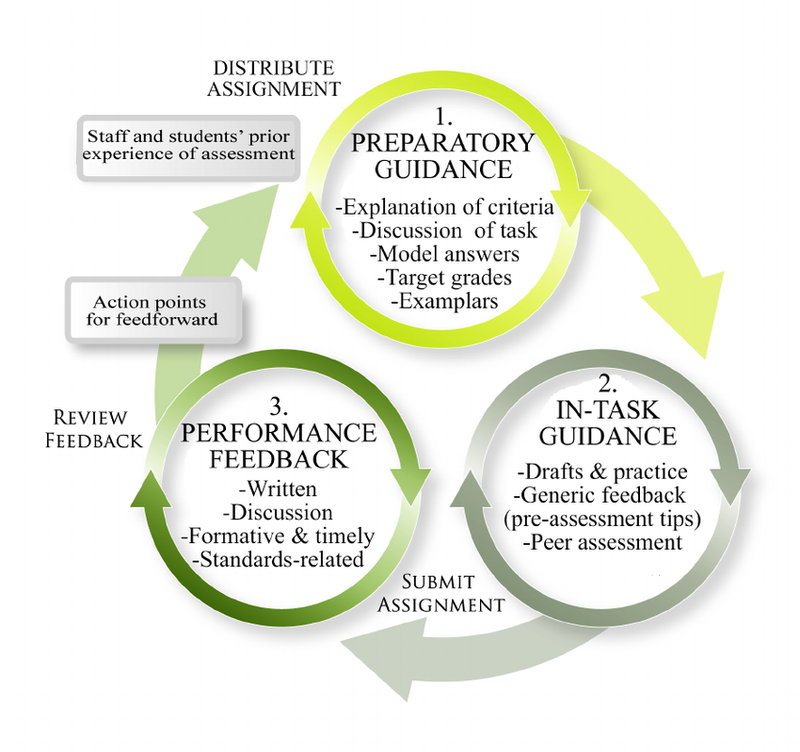e-Learning Ecologies MOOC’s Updates
Dialogic Feedback - a means to scaffold the development of independent learning for students
In the 4th Affordance, Recursive Feedback, Dr. Cope describes how formative and summative assessments differ and how the digital environment today provide for an easy means to develop feedback mechanisms. From peer-to-peer, automated evaluations using NLP and data mining, the importance of feedback during artifact development is of crucial importance for both students and teachers. Dr. Cope shares his utopic vision that summative assessments will no longer be needed, as recursive feedback forms an important guiding force encouraging the student to improve from one draft to the next.
One concept of recursive feedback is dialogic approaches to feedback. As defined by Carlesso (2013), dialogic feedback represents “interactive exchanges in which interpretations are shared, meanings negotiated and expectations clarified” (p. 90). This is facilitated when students and teachers enter into trusting relationships in which there are ample opportunities for interaction about learning and the notion of quality (ibid.). The Dialogic Feedback Cycle was developed by Beaumont (2011) to share a visual representation of what the concept is:
In a recent study, four quality dimensions of dialogic feedback were conceptualized:
- emotional and relational support
- maintenance of the dialog
- expressing themselves
- the other’s contribution to individual growth
These four dimensions, the authors argue, are highly relevant for the teacher-student interactions, where the teacher still holds the center-stage.
According to Leese (2010), the students are concerned due to the significant difference between higher education assessment versus school. The students, the study reveals, are faced with “individual learning” during first year of University and feel the need for more structured activities on campus and more support from academic staff.
But how dialogic feedback enhance student learning in order to ease the transition to independent learning? How can it make the face-to-face communication be more specific to each student’s needs and ambitions? The short answer would be that it can’t unless the feedback draws from other data points, machine assisted evaluations or crowdsourcing – which in this context means peer-to-peer reviews, Twitter-like comment feeds and similar. As Dr. Cope states, the teacher can’t manage to give individual feedback to each one of the students and cannot possibly cover all of them. But using digital tools, the teacher can be a little closer to the student. He or she can better evaluate his needs, his strengths and weaknesses and provide for dialogic feedback face-to-face, involving the student and allowing them to express themselves in a trusting relationship setting. Dialogic feedback is, in my view, a solid mechanism for student transitioning to an individual learning environment.
References:
Beaumont, C., Moscrop, C., & Canning, S. (2016). ”Easing the transition from school to HE: scaffolding the development of self-regulated learning through a dialogic approach to feedback”. Journal of Further and Higher Education, 40(3), 331-350.
Beaumont, C., O’Doherty, M., & Shannon, L. (2011). "Reconceptualising assessment feedback: a key to improving student learning?". Studies in Higher Education, 36(6), 671-687.
Leese, M. (2010). ”Bridging the gap: supporting student transitions into higher education”. Journal of further and Higher Education, 34(2), 239-251.
Steen-Utheim, A., Wittek, A. L. (2017), “Dialogic feedback and potentialities for student learning”. Learning, Culture and SocialInteraction, 15 (2017) 18–30.
Yang, M., & Carless, D. (2013). ”The feedback triangle and the enhancement of dialogic feedback processes”. Teaching in Higher Education, 18(3), 285-297.


